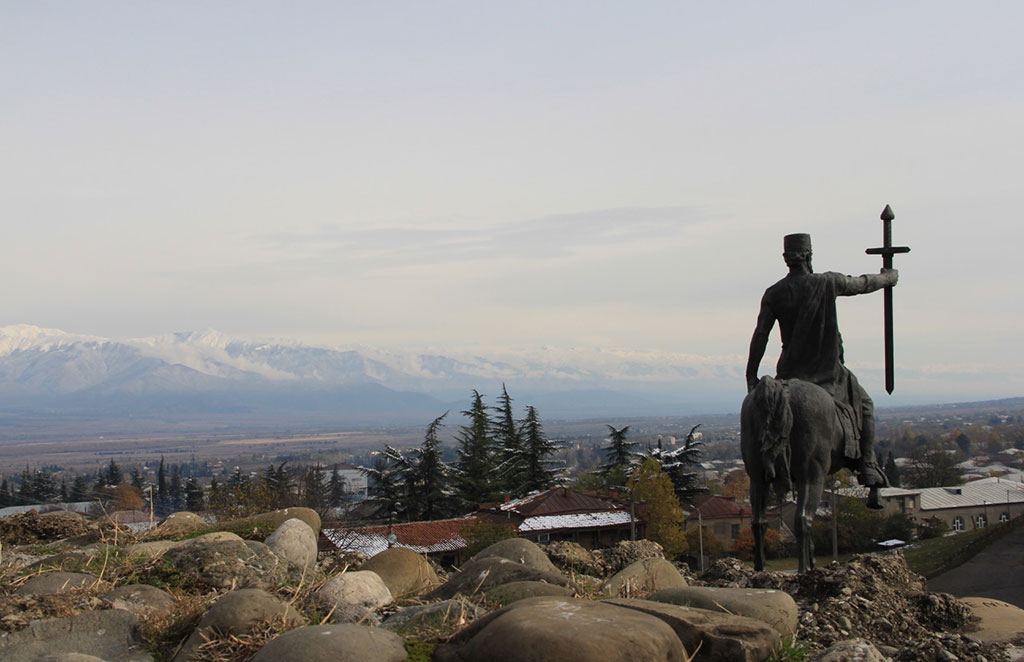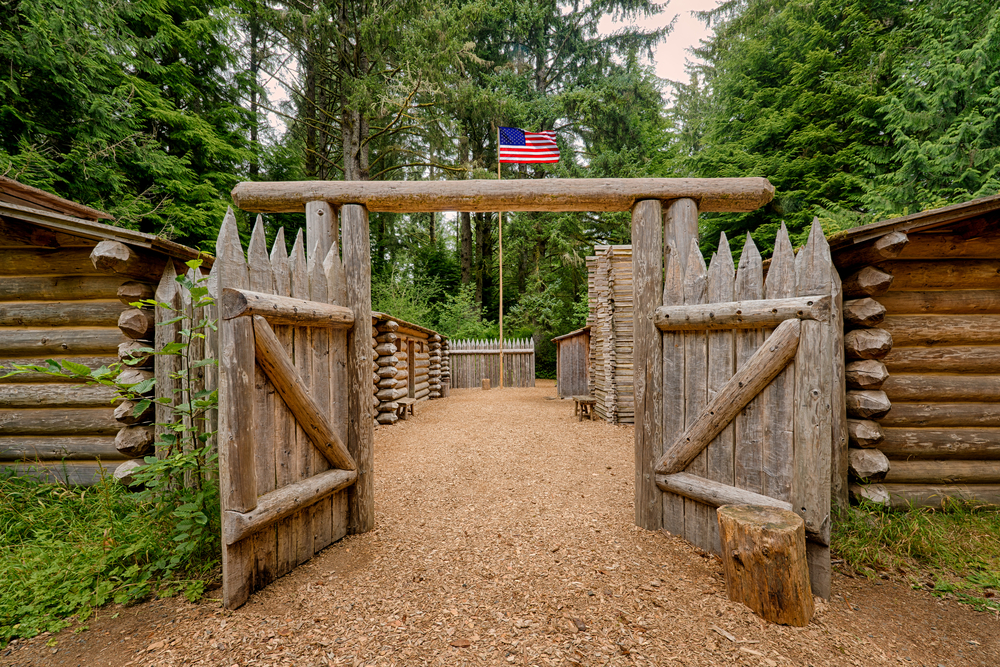Category: Tourism Development
Kingdom of Saudi Arabia
Written by SolimarInt on . Posted in Tourism Development.
Solimar Rolls out New Website for Lewis and Clark National Historic Trail
Written by Editor Solimar on . Posted in Blog, Destination Partnerships, Tourism Development, Tourism Marketing.
Since 2016, Solimar has been working with the National Park Service to develop and implement a tourism strategy for the Lewis and Clark National Historic Trail.
The Trail, which currently extends from St. Louis to Cannon Beach, Washington, traces the route that Lewis and Clark and the Corps of Discovery followed during their 1804-1806 expedition to the Pacific. The Trail was designed by an act of Congress in 1978 and includes portions of 11 states and multiple Native American reservations. Today, the Trail links contemporary communities whose historic connections span generations to the places associated with the expedition.
Following a series of workshops in 2017 with stakeholders along the trail, Solimar drafted the Lewis and Clark National Historic Trail Sustainable Tourism Plan 2019-2023. The Plan is intended to encourage the public’s use and enjoyment of the Trail without adversely impacting the resources, which the National Park Service is mandated to protect. Among the strategies laid out is a plan to build a local constituency of destination ambassadors and storytellers and work with these individuals to support the ongoing stewardship and promotion of the destination.
Solimar recently rolled out a new tourism website for the Trail, which includes content about more than 150 points of interest that was written and submitted by local experts who know the area best. Residents who live anywhere along the thousands of miles of Trail are invited to nominate businesses, destinations, and other points of interest to be featured on the site by logging in or creating an account here.

In March, the National Park Service announced that the Trail would be expanded a further 1,200 miles east to Pennsylvania to include what is called the Eastern Legacy, which includes parts of Indiana, Kentucky, Ohio, Pennsylvania, and West Virginia.
Solimar is now tasked with supporting NPS’s outreach and engagement to hundreds of communities and millions of residents who will soon be connected to the Trail, and help extend the benefits of the Trail along the Eastern Expansion.
Visitor Centers We Love
Written by SolimarInt on . Posted in Tourism Development.
When working in destination marketing, it’s easy to get caught up in the initial phases and to focus your attention and energy upon attracting visitors to your destination. But what happens once the visitors arrive? Your visitors need a physical place to begin their trip, to get comfortable with the location, and to plan their time in the destination. In order to fulfill your visitors’ needs and serve the market, an effective destination visitor and information center, or a “welcome center,” is key.
Fantastic visitor centers come in all shapes and sizes. A few of our favorites include National Geographic’s extensive Grand Canyon Visitor Center with features such as an IMAX theatre and detailed maps and information, the Mgahinga Gorilla National Park, which is simple but comfortable and well-staffed, and the Bocas del Toro visitor center, which was the region’s first tourist center
This post will cover the 5 must-haves that make these visitor centers great and are valuable for any destination’s visitor center.
5 Must-Haves for a Great Visitor Center:
1. Amenities- Consider the amenities that would make a visitor comfortable upon recently arriving in your destination. Clean and free bathrooms are always important. Especially if your destination is geared towards families, it would be helpful to offer baby changing facilities. If possible, consider the accessibility of your visitor center for the handicapped- a ramp or no stairs and spacious walkways are a good start.
An essential for visitors, particularly foreign visitors, is a way to get or exchange money. It is extremely helpful to offer a safe and reliable ATM and/or currency exchange machine on-site. If your visitors will be driving, be sure that there is adequate parking space available.
Depending upon the weather in your destination, and whether your budget allows, consider the heating or air conditioning in your visitor center to ensure that your visitors are physically comfortable while they visit the site. Make sure that the building itself is clean and well-lit, presenting an inviting space to guests. The provision of these amenities will help your visitors to be comfortable in your destination
2. Practical Information– Visitors come to your visitor center in order to gather information about the destination. With this in mind, be sure that your information is current, accurate, trustworthy, and delivered in a high quality manner. Digital kiosks, a master guide to the destination, and a local city guide are all great ways of providing information. Your visitor center should be the number one place for visitors to go to find information about the destination and to have their questions answered. Try to anticipate the information that visitors will need.
Maps and directions are essential; provide professional maps of the local and surrounding area that are clearly labeled. Consider whether your visitors will be driving, walking, or hiking in your maps. If they will be driving it will be most important to have streets clearly indicated, while for those seeing the destination on foot, it will be more helpful to provide walking routes and nature trails. Between your maps and staff, be sure that directions are easily available for all primary attractions, restaurants, and lodging sites. Provide transportation information for both public and private options, such as public bus or rail options and private car rental options and costs.
Other useful information includes tours, lodging, and attractions. If possible, it is helpful if tickets are available for purchase directly at the visitor center, especially if a combination deal is available such as “3 museums for the price of 2” or “save 20% when you purchase tickets for the bird-sighting walk and the river boat tour together.” If additional information resources, such as guidebooks and translation dictionaries, are available, it is convenient for the visitor if they are offered as well.
3. Education Materials– In addition to practical information about the region and tours, educational and enrichment materials are valuable additions to your visitor center. Include interactive and visually appealing displays to help visitors learn about the history, wildlife, people, and culture of the region.
By allowing visitors to learn more about the region than information directly related to their tour, they will gain a deeper connection to the region and have a more meaningful tour and trip.
4. Friendly Staff– While nice amenities and good information are both very important, the importance of a friendly face cannot be overemphasized. The international tourist expects to find someone at an information center who is knowledgeable, polite, respectful, fluent in the tourist’s language or English, and eager to help.
5. Souvenirs– While a great visitor center doesn’t require souvenirs, tourists enjoy buying memorabilia to commemorate their visit, and a visitor center is a great place to sell it. Postcards are great, as well as local crafts, foods, jewelry, and products. Offering locally-made souvenirs allows visitors to remember their trip with a meaningful gifts or memento while also supporting the local economy.
Best Practices in Integrating Sustainability in Tourism Management and Operations
Written by SolimarInt on . Posted in Tourism Development.
The importance of sustainable tourism development is increasingly recognized throughout the sector. However, it has been a challenge for many organizations to integrate sustainability into tourism management and operations.
Here are a few tips and examples on how to incorporate sustainability in your destination’s tourism management and operations.
Involve Local Residents and Communities in Tourism Planning
Sustainable tourism development requires the participation of local residents and businesses at the planning stage. By consulting with local stakeholders, you gain their support and reduce conflict as the plan progresses.
In Solimar’s Geotourism projects, which seek to highlight the unique culture and heritage of a region through the voices and stories of the people that live there, local residents are invited to nominate places of interest. This provides more economic benefits to local businesses especially those that are less known. The nominations are reviewed by a Stewardship Council, composed of representatives from the region, before being used to create an interactive website, a MapGuide, and a Smartphone app.
Establish Partnerships with Different Stakeholders
Effective collaboration among different stakeholders from the government, tourism boards, businesses, and local communities is crucial to successful sustainable tourism management and operations. This facilitates a more balanced system of decision making as the priorities of various sectors are considered.
To assist Uganda in tourism development, Solimar actively involved stakeholders from each part of the tourism and conservation sectors. The cooperation among the stakeholders was important to enhance tourism products, build strong community enterprises, strengthen linkages among different attractions, and bolster the success of the program.
Develop Products Based on the Destination’s Strengths
What are the local assets that your destination can highlight? Destination assessment should be conducted to identify the strengths of a destination and determine the best tourism products based on the findings.
In our destination assessment for the Sierra de la Gigante region, Solimar and RED Sustainable Travel identified potential conservation models that leverage the region’s strengths in order to address conservation goals and provide economic opportunities for the local population.
Strengthen Local Capacity to Manage Tourism
Sustainable tourism management and operations need to equip local businesses with skills to succeed. Workforce development and training is therefore integral to a successful strategy.
To strengthen the capacity of the Ethiopia Sustainable Tourism Alliance (ESTA), Solimar conducted workshops and created materials to train personnel in using the necessary tools and activities to implement community tourism in Ethiopia.
Target High-Yield Market Segments
High visitor numbers aren’t inherently valuable for your destination. In sustainable tourism management and operations, it is important to serve the proper target markets. Fortunately, there has been a growth in the number of travelers who demand more responsible travel and have higher visitor expenditure.
The Namibia North American Destination Marketing Campaign targeted travelers who would most appreciate the country’s strong conservation and special interest selling points. These include curious conservationists and experience seekers. This is why a destination assessment of strengths is so important—you must know what you are marketing and to whom.
Use Guidelines to Limit Impact
Creating guidelines is important in sustainable tourism management and operations. It not only helps the destination preserve its ecological value, but also helps businesses limit their negative environmental and socio-cultural impacts. Educating visitors and locals on best-practices matters.
Solimar is part of the Global Sustainable Tourism Criteria (GSTC) Initiative , which fosters increased understanding of sustainable tourism practices and promotes the adoption of universal sustainable tourism principles.
Leila Calnan, Senior Manager, Tourism Services Cardno Emerging Markets
Contact us
-
Address
641 S Street NW, Third Floor
Washington, DC 20001 -
Phone
(202) 518-6192 -
Email



